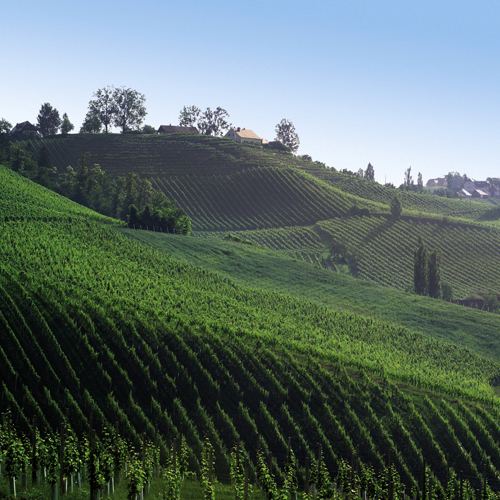 | ||
Hügelland is a type of landscape consisting of low, rolling hills whose topography or surface structure lies between that of a lowland region (plains or river terraces) and that of a more rugged hill range or low mountain range. The term is German and has no exact equivalent in English, but is often translated as "hill country", "hilly terrain", "upland(s)" or "gently undulating" or "rolling country", or "rolling countryside". It is derived from Hügel, a low hill or hillock and appears frequently as a proper name for this type of terrain.
Contents
The term Hügelland is not unambiguously defined, even in German. For example, on the plains of North Germany, Poland or Hungary it may be applied to terrain with a height variation of just 50 metres, whilst in the Alpine Foreland or in the Pre-Alps it might refer to terrain with a height difference of at least 100–200 metres. On the other hand, some scholars prefer to define Hügelland by its height above sea level; for example, applying it to terrain between 200 and 500 metres above sea level.
Structure
Structurally and geomorphologically, a Hügelland landscape has a significant proportion of less well-defined components. For example:
Hills and mountains are caused by folding along tectonic weaknesses or fault lines, which are then followed by rivers. This results in a parallel pattern, which can be made even more regular through erosion. Hügelland rarely exhibits these properties.
When the gently rolling hills of a Hügelland are suitable for agriculture, their small-scale nature is further reinforced, which may result in a colourful succession of mixed forest and open areas with pastures, meadows, arable crops and orchards, divided by hedgerows along the tracks, lanes and embankments. Mixed woodland, hedges, ponds and scattered settlements occur, giving the appearance of a mosaic from the air.
Regions named Hügelland
The regions listed below have Hügelland as part of their proper name. Several also have alternative English-language names.
Other examples
An example of Hügelland outside Europe is Rwanda in Africa, whose character is expressed by its French name of Pays de Mille Collines ("Land of a Thousand Hills").
